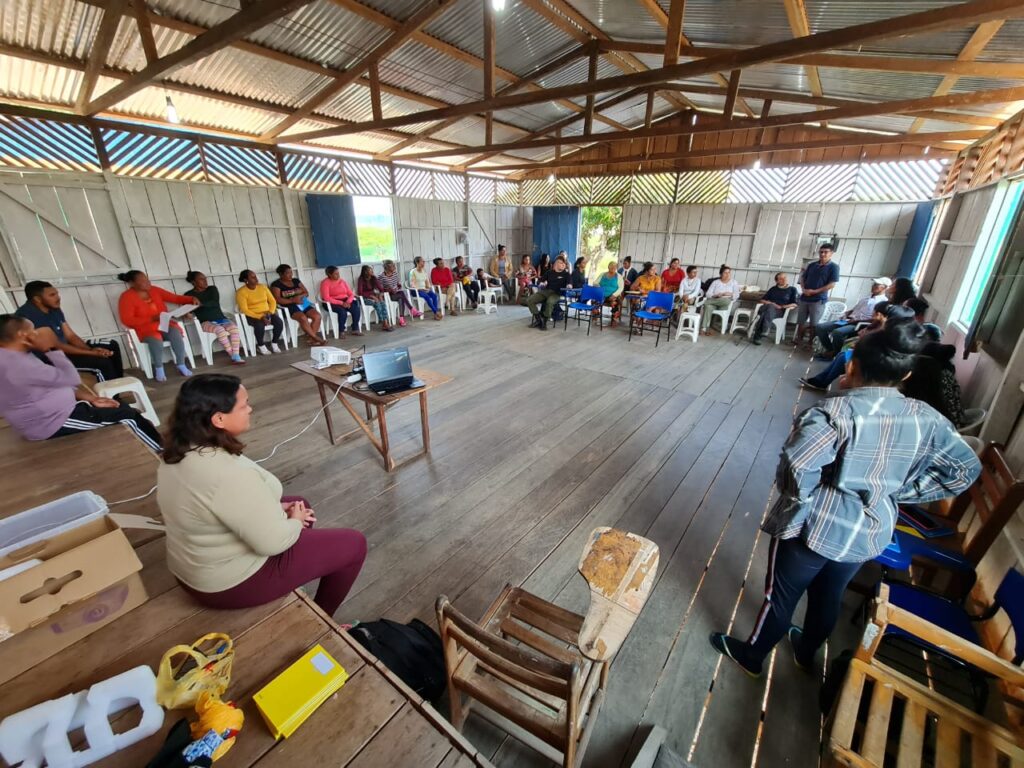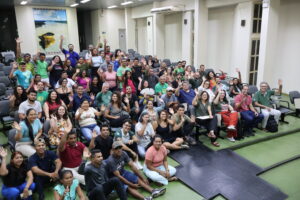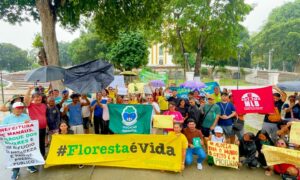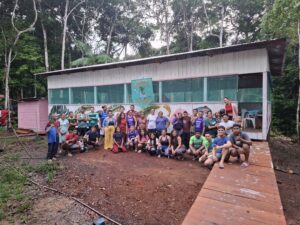The activity is a way of encouraging women to become capable of occupying other spaces in the process of management of arapaima.
By Camila Figueiredo
From September 16-18, 36 women participated in the 2nd Workshop of Methodology of Count and Monitoring Tools of Arapaima, offered by Instituto Juruá and the Association of Agro Extractive Residents of Low-Mid-Juruá (AMAB). Held in the Lago Serrado community, the training’s objective was empowering women for them to participate more in the phases of the management process. The 1st Workshop happened in November 2021 and trained women that participated in the counting of lakes this year.
“Women have always been present in parts of the phases especially in the moment of the fishing evisceration and the preparation of meals during the work of harvesting. The course offered by Instituto Juruá and partner institutions is an encouragement for women to gain other spaces in the phases that they feel capable of working in” says Silmevia Vida, analyst of Fishing Resources of Instituto Juruá, who helped with the event’s organization.

On the workshop’s first day, the students participated in a theoretical immersion of the counting process. In addition to learning, they had the chance to ask questions. On the second day of activities, they practiced what they learned on the first day. During the third and last day, the students had the chance to view the practice of the counting methodology, by the “boiada” (when they come up to the surface) to differentiate arapaima below the minimum size for fishing (1,5 meters), usually called “bodeco”, from the adult arapaimas (above 1,5 meters).
“Knowing how to differentiate through “boiada” – these two classes of size are essential for sustainability of the management. Thanks to this phase of the management, we can estimate the count of the arapaimas from the count environment and later with all the counting data from all environments. The census is made and sent to IBAMA to determine the quota that will be harvested the next year, ” Simelvia explains.

Female students during the practical class of the count workshop in the Lago Serrado community.
The practical activities were supervised by certified counters-professors Edimar Souza from Instituto Juruá and Robson Cunha, a member of the Association of Rural Productors of Carauari (ASPROC).
There were 36 students who came from eight communities and organizations, which are outside the limits of conservation units of the region, but have a fishing agreement. They are: Concordia, Lago Serrado, Praia da Reforma, Ressaca, Santa Cruz, São João, Colony of fishermen Z-25, and Terra indígena Matatibem.

The workshop also received special guests, partners, and supporting communities. Edgardo Pisco and Raúl Ojanama, fishermen and members of the Proyecto VASI came from Peru to be trained in the arapaima counting and then accompanied the management that is fulfilled from November 20-25 in the Lago Serrado community.
After visiting the fishing warehouse of the Association of Rural Producers of Carauari (ASPROC), located in Carauari, Pisco and Ojanama intend to take the experience to Peru so that in the next few years the project can replicate the model of sustainable management in the communities they attend to.
The organizations that collaborated with the capacitation were ASPROC, Chico Mendes Institute for Conservation and Biodiversity (ICMBio), the Association of Agro Extractivist Residents of Low-Mid-Juruá (AMAB), the Association of Agro Extractivist Women of Mid-Juruá (ASMAMJ) and the Federal University of Pernambuco. The 2nd workshop’s balance was very positive, with 95% of the students being approved having scored from good to excellent. “We are sure that in the next year of harvesting, many more women will participate and fill the spaces they want in the management of arapaima” says Simelvia.






